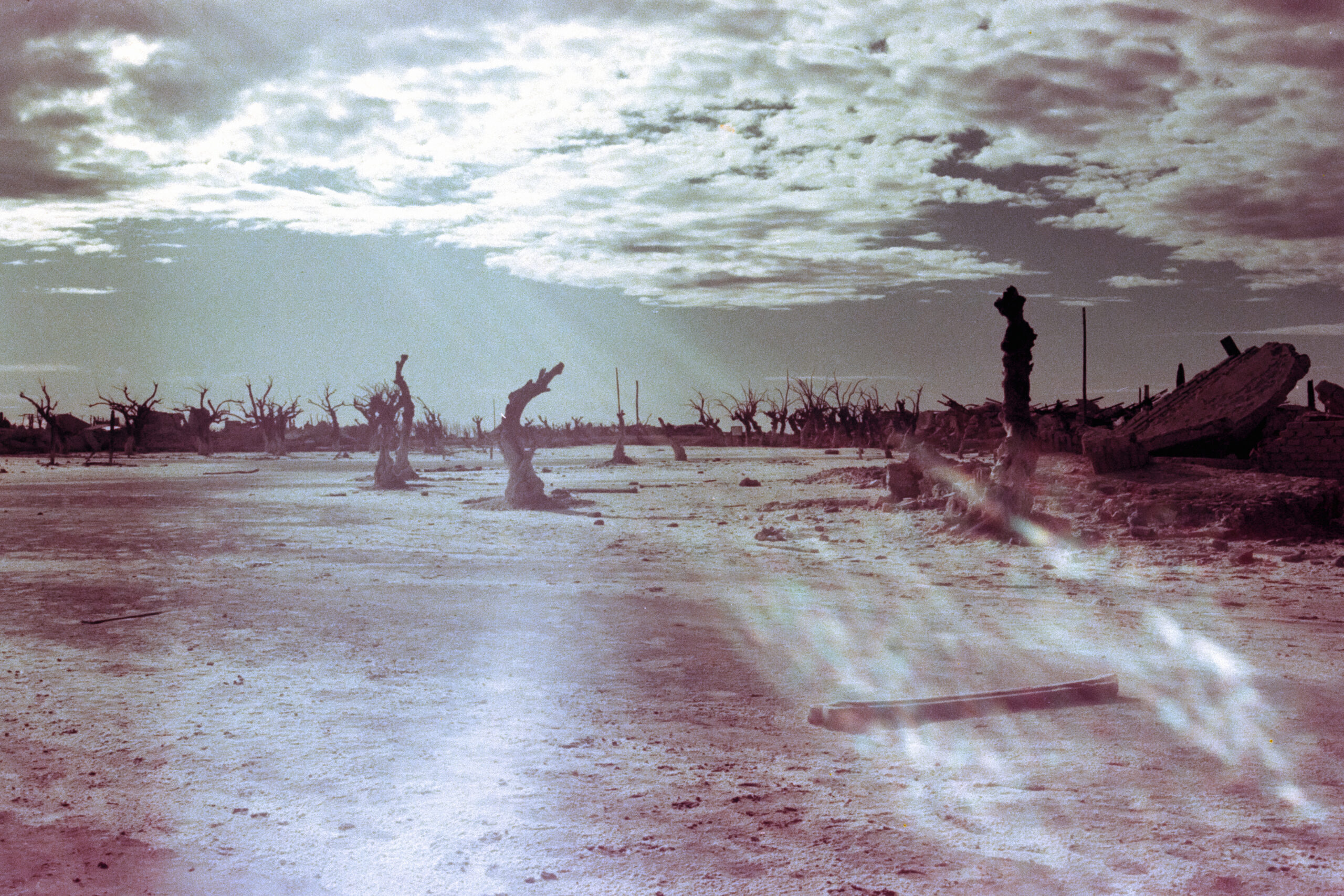
Charlie Kaufman imagines a plane crash at the beginning of his semi-autobiographical film Adaptation; he envisions himself nonplussed while the passengers around him scream and fight each other for oxygen masks. I always imagine frantically writing an invariably optimistic goodbye note to my family as my plane descends – reassuring them, falsely or not, depending on the day, that I enjoyed what life I had. Almost anyone who’s flown in an aircraft has played a similar “What if we all die?” scenario in their minds, even if just half-consciously while watching the safety demonstration.
In my scenarios, the falling plane often rights itself, the engines catch, and the lights flick back on. Like these passengers on this Qantas flight over Borneo that went into ten-second free-fall, I end up landing at my destination with head cuts and shaken nerves, feeling brave and heroine-like. But what if the plane doesn’t right itself? What if it keeps on falling?
The passengers of Malaysian Airlines flight MH370 might also have entertained such scenarios when they left Kuala Lumpur on March 8. If nervous flyers, they might have found myriad ways – meditation, music, earplugs, pills – to assure themselves the flight would be fine. And the take off was. What happened next, though, was likely not fine and is completely unknown. It is a thousand wild speculations, a thousand attempts to make sense of something that, so far, is nonsensical, is failed by our 2014 technology and our intelligence – a modern day Bermuda Triangle mystery.
There’s an aspect of the missing flight that is indubitable: the pain of the victims’ families. “It’s already been so many days,” said one family member of a passenger, quoted on BBC News, “and no clues. They’re always searching, always searching. Can such a big plane not be found?” What’s real and obscured in some of the excitement over this blockbuster-like plot is that 239 people have dropped out of the lives of their families, relationships, workplaces, art studios, houses, and communities. 239 people have just been erased. They’ve been lost in time, frozen in the last moment that their familiars saw them. Like the victims of the Oslo, Washington, landslide on March 22 this year, they are suspended in the air, or in rubble, or in the ocean, and the emotional processing of those who knew them is suspended in midair too.
When Malaysian Airlines finally concluded that the search for missing flight MH370 was over, or rather, that pretty much, such a big plane could not be found, they broke up with the victims’ families via text message: “Malaysian Airlines deeply regrets that we have to assume beyond reasonable doubt that MH370 has been lost and that none of those onboard survived.” The airline later tried to explain its insensitivity by stating that not all the families had received the “we give up” news this way – only those who hadn’t been notified first by phone or in person.
If someone you are bonded to has disappeared, what do you do when you have to assume they have died, but have no proof? Can you accept it? 239 bodies still have not been found, the plane wreckage not yet recovered. Sarah Bajc, whose boyfriend was on the flight, told the Associated Press that without confirmed wreckage she’s had “no real closure,” that the process of grieving couldn’t begin.
This kind of emotional in-between space, an ’emotional interregnum,’ to invent a term that marries political science and psychology, engenders its own particular state of being. It holds a super-powered mix of hope, denial and chest pain able to fire off in any direction. Imagine someone whom you deeply love, unconditionally, tells you that they might never see you again, but they’re not sure. You wait, anticipating massive heartache, but unable to feel it or believe it in fully.
When my mother went missing, it was only for a day and a half. I was twelve, and she was already far away in her mind, suffering a nervous breakdown. She simply disappeared from the relative’s house where she was staying at the time. One night she walked out the door and did not return. The next day, we were informed of her absence. Inside the absence, we found questions. Had she left by choice? Was she coming to find us? Her information was blared across the radio. We listened, as search parties were sent.
In the time of uncertainty, the relative of a lost person is neither lost nor found; in some sense you, the relative, disappear too. Your identity becomes one of potentials, of possible outcomes. This uncertainty is shapeless. It is also something you can, paradoxically, cling to, because it holds the chance of eventual certainty.
The questions engulfed my family thickly, like jellyfish in a warm current. Suddenly, previously impossible things were possible. A mother dying was possible. A mother hitchhiking five hours home might be possible too. A mother going to find a distant relative for relief was possible. A kidnapping, an abduction, a mix up with the wrong sorts of people, whomever they might be; all were possible. A new reality formed in a single instant. As Steiner quotes in La Dolce Vita: “basta uno squillo di telefono ad annunciare la fine di tutto.” A single ring of the phone is enough to announce the end of everything. As you know it. The “fine di tutto” is new limitless reality.
They did find my mother’s body, on a beach, the next day. It was washed up in the tide.
The thirty-six hours of my mother’s lost state, her suspension in air or in water, her existence as a frozen moment of the last time I saw her, are etched into my memory like a tattoo. Each hour has a texture. It didn’t alleviate our pain when the police found her body, but it did allow one type of pain to end and a new type of pain to begin. The questions we asked shifted. How would we deal with this? What shape would our new lives take?
The relatives of the passengers on flight MH370 waited sixteen days before Malaysian Airlines made the “assumption beyond reasonable doubt” that their loved ones were lost. Each hour of the sixteen days before the airline’s break-up text must have been insufferably long. And still, the emotional interregnum of the victims’ families goes on because no physical evidence of the plane’s wreckage has yet been found. Everyday a new conspiracy theory circulates, and an observer enthralled in the mystery proposes an outcome. Everyday, so far, this outcome is discredited.
Until the 239 passengers are found, the victims’ families stay suspended, in emotional midair. We observers stay suspended, wondering at possibilities.
Melody Nixon, a New Zealand-born writer living in New York City, is the Interviews Editor for The Common.
Photography credit Gordon M Robertson.



